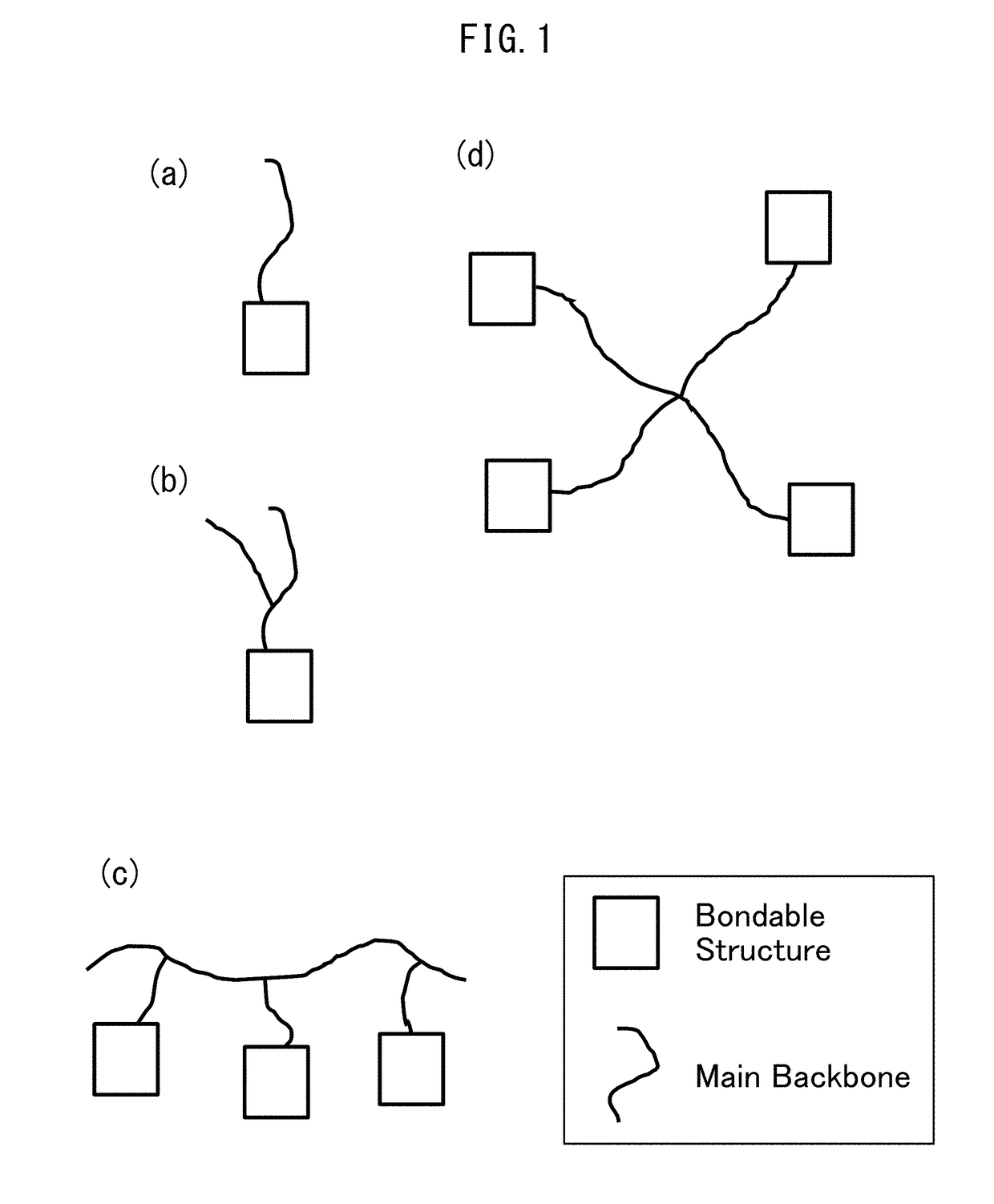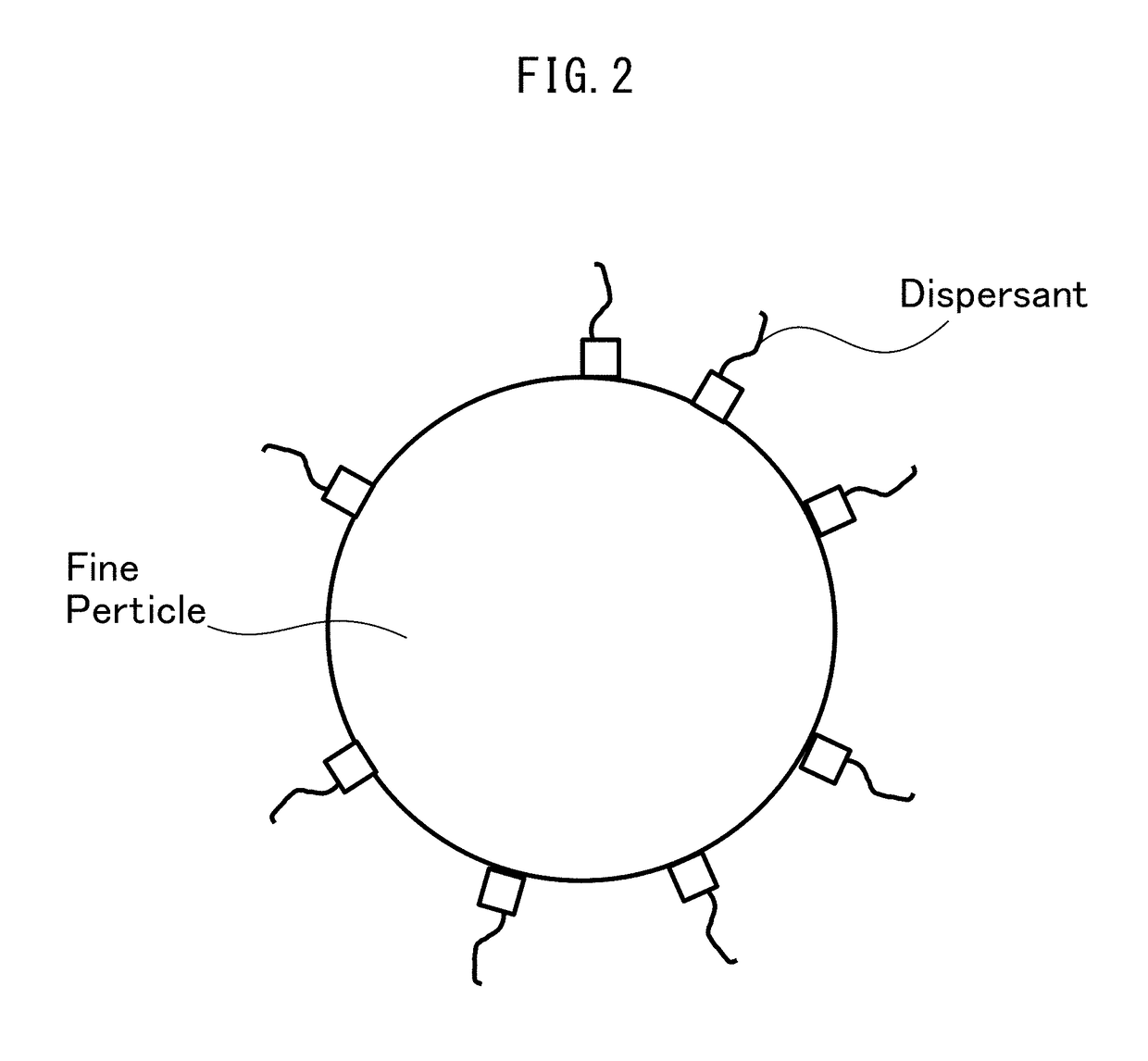Dispersion
a technology of dispersion and coating, applied in the field of dispersion, can solve the problems of difficult to form fine wirings by printing methods, difficult to form conductive thin films on low heat-resistant base materials, and conventional circuit board production methods, and achieve excellent reverse printing suitability and smooth coating films.
- Summary
- Abstract
- Description
- Claims
- Application Information
AI Technical Summary
Benefits of technology
Problems solved by technology
Method used
Image
Examples
application examples
[Application Examples of the Invention]
[0309]As explained above, according to this embodiment it is possible to obtain a highly smooth conductive film having a micronized pattern. The conductive film can be satisfactorily utilized in a printed board, flexible printed board, electromagnetic shield sheet, semiconductor device (thin-film transistor, diode or ferroelectric memory) or metal mesh transparent conductive film, for example.
[0310]Application of this embodiment to a metal mesh transparent conductive film will now be explained.
[0311]A metal mesh transparent conductive film is one having a metal wiring with a width of 50 μm or smaller formed in a mesh-like manner on a transparent base material. The metal mesh transparent conductive film has the feature of being apparently transparent but with low electrical resistance on the surface. Since a structure having a width of 50 μm or smaller is poorly visible, the metal wiring of a metal mesh transparent conductive film appears not to...
example 1-13
[0338]To 0.20 g of silver nanopowder with a particle size of <150 nm (product name: “Silver nanopowder, particle size: <150 nm, 99% trace metal basis”, product of Aldrich) there were added a mixture of 0.010 g of poly(ethylene glycol) methyl ether thiol with a number-average molecular weight of 6,000 (product of Aldrich Co.) and 0.030 g of poly(ethylene glycol) methyl ether thiol with a number-average molecular weight of 800 (product of Aldrich Co.), as a dispersant, and 0.76 g of distilled water as a solvent, and a homogenizer was used for dispersion to obtain a dispersion for Example 1-13 containing silver particles.
[0339]The mean secondary particle size of the microparticles in the dispersion of Example 1-13 was 521 nm.
examples 1-14 to 1-16
[0340]Dispersions for Examples 1-14 to 1-16 each containing silver particles were obtained by the same procedure as Example 1-13, except for changing the type and amount of each component in the dispersant mixture, as shown in Table 1.
[0341]Each of the dispersions obtained in Examples 1-13 to 1-16 were measured by GPC, and in the molecular weight distribution curve in terms of polyethylene glycol, a peak was detected in both the molecular weight region of 31 or greater and less than 1,000 and the molecular weight region of 1,000 or greater and 40,000 or less.
[0342]The mean secondary particle sizes of the particles in the dispersions, and the results of the evaluations conducted by the methods described above, are also shown in Table 1.
TABLE 1DispersionParticleMeanCoated filmsecondaryDispersantSolventProlongedFineSurfaceparticleMolecularAmountAmountDispers-storageprintingroughnessTypesize (nm)Typeweight(g)Type(g)ibilitystabilityproperty(nm)Comp.Copper (I)35PEG-MET 8008000.040N-butano...
PUM
| Property | Measurement | Unit |
|---|---|---|
| molecular weight distribution | aaaaa | aaaaa |
| molecular weight distribution | aaaaa | aaaaa |
| molecular weight distribution | aaaaa | aaaaa |
Abstract
Description
Claims
Application Information
 Login to View More
Login to View More - R&D
- Intellectual Property
- Life Sciences
- Materials
- Tech Scout
- Unparalleled Data Quality
- Higher Quality Content
- 60% Fewer Hallucinations
Browse by: Latest US Patents, China's latest patents, Technical Efficacy Thesaurus, Application Domain, Technology Topic, Popular Technical Reports.
© 2025 PatSnap. All rights reserved.Legal|Privacy policy|Modern Slavery Act Transparency Statement|Sitemap|About US| Contact US: help@patsnap.com



